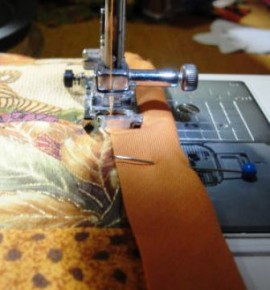by Holly Hanover
All that work! And yet your project isn’t complete until you bind the edges. The binding has to look just-right, or it can detract from your quilt’s ultimate beauty.
Here are five common mistakes you should definitely avoid:
1. Oops, not quite enough.
Failure to correctly calculate the total length of binding you’ll need – and therefore the amount of fabric – could be disastrous. You could run out of fabric, or run short of binding. Remember that making bias binding requires more fabric than straight-grain, especially if you need longer runs and don’t want too many seams.
2. Binding looks uneven.
Cut and fold binding strips carefully to ensure they’re uniform. Bias-cut binding needs to be exactly 45 degrees, or it will pull out of shape and be hard to handle. Trim the quilt edges all around to be sure they’re perfectly straight – use a yardstick or ruler if you need guidance. And be sure all layers are evenly thick right to the edge so the binding is uniformly thick.
3. Corners don’t look sharp.
It can be easy to fold mitered corners backward, so the fold winds up on the visible side rather than inside. Practicing on some scraps before you start stitching the quilt will help you get the fold right-side-out and perfectly square.
4. Stitching problems.
Decorative stitches can be pretty, and they can help cover up mistakes such as uneven machine stitching on the reverse side. But stitches have to match the scale of your binding. A fancy stitch that might look great on a wide binding can overpower a narrow one.
Unless you’re deliberately going for a decorative look with the stitching itself, thread should match the binding so it’s unobtrusive. After all, binding is supposed to frame the piece and give it a finished look, not draw attention from your beautiful quilting!
Sometimes the sheer bulk of your quilt makes it want to bunch up or pull while you’re stitching. Set a chair, table or your ironing board next to the sewing machine to support the quilt’s weight.
5. The binding wears out.
Edges receive the most wear-and-tear, so binding has to be strong. If your quilt will be used often, as opposed to a strictly decorative piece, avoid using self-binding. And note that bias binding is stronger than straight-grain.
Here’s to your next beautifully-bound quilt!
Click here for more instructions on Quilt Binding.


One Response to Quilt Binding: 5 Mistakes to Avoid